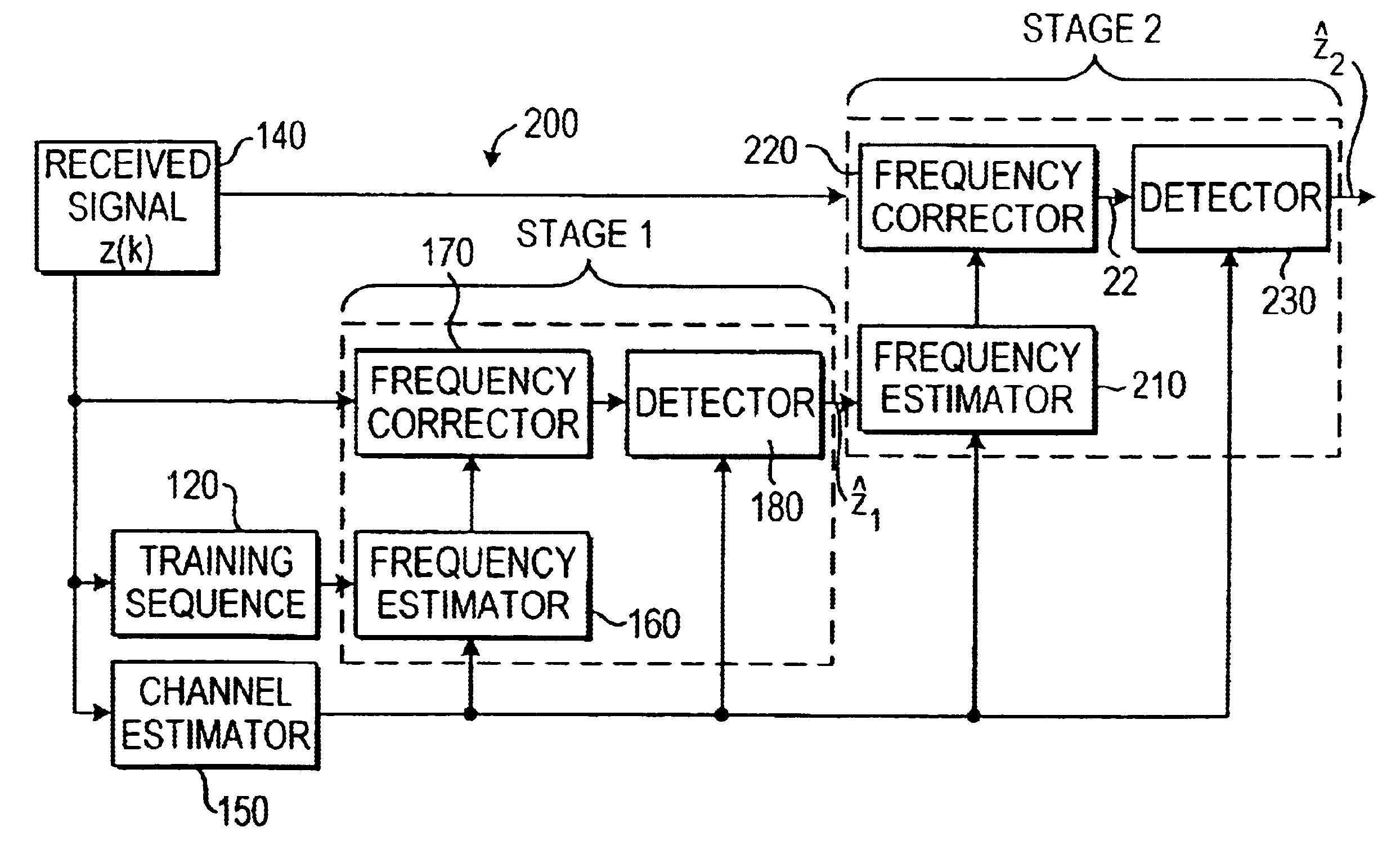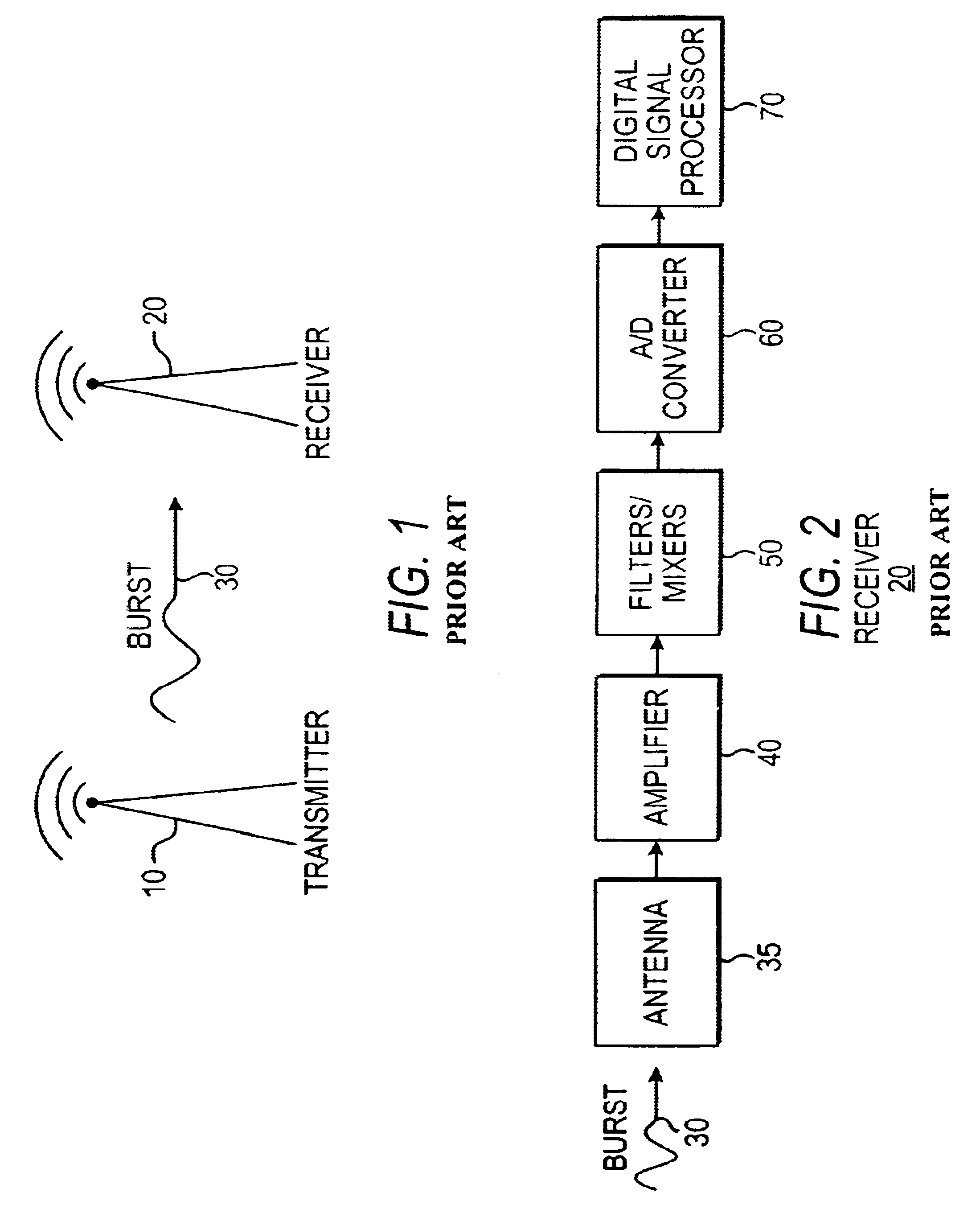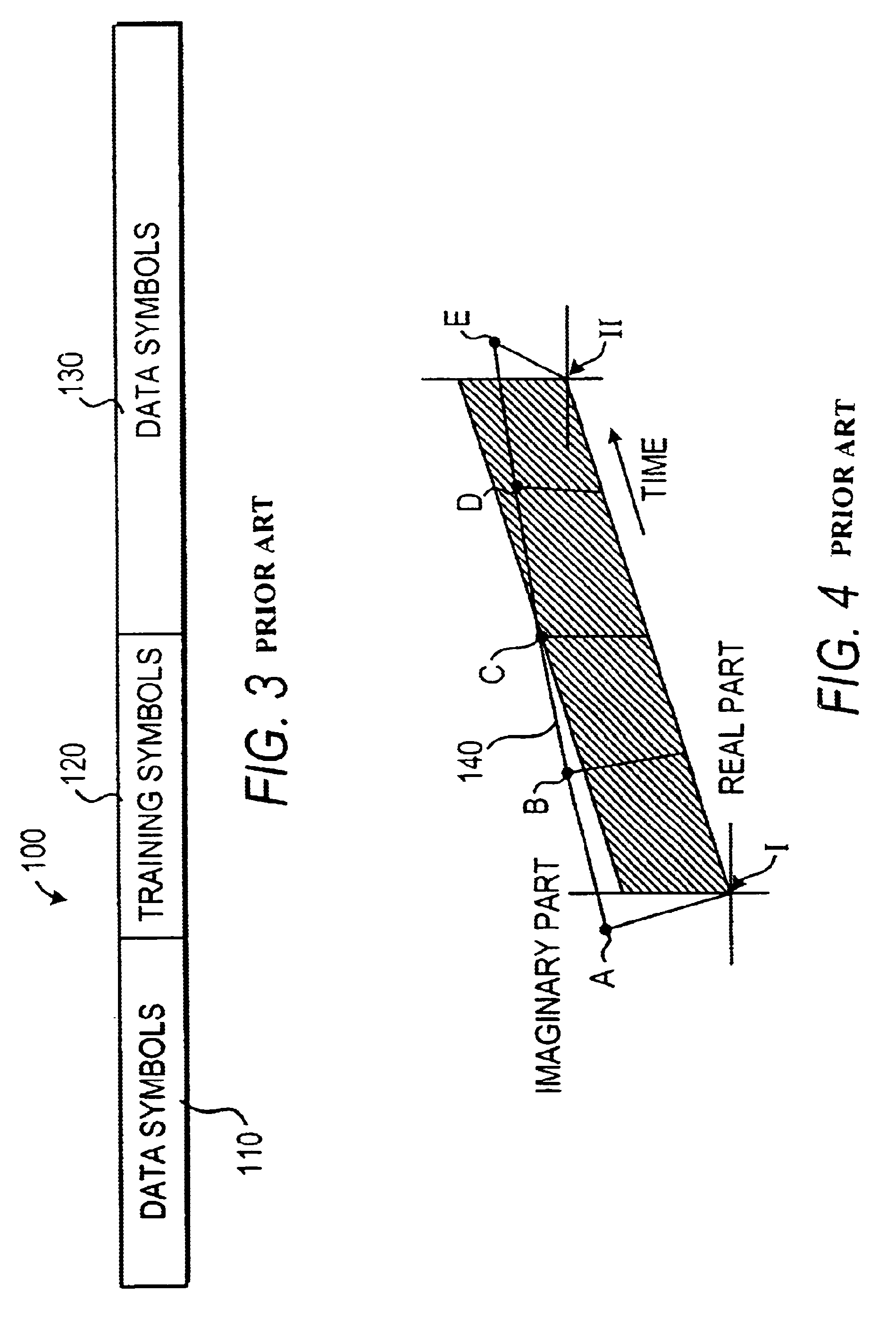Method for automatic frequency control
a frequency correction and automatic technology, applied in the direction of digital transmission, electrical equipment, transmission, etc., can solve the problems of high bit error rate, frequency offset presents a more significant problem, and receiver 20 cannot distinguish between phase changes
- Summary
- Abstract
- Description
- Claims
- Application Information
AI Technical Summary
Problems solved by technology
Method used
Image
Examples
Embodiment Construction
The frequency correction structure 200 of the present invention, shown in FIG. 8, improves upon the prior art by performing a two stage frequency correction, labeled Stage 1 and Stage 2. To distinguish between the values of variables calculated at each of the two stages, variables calculated at Stage 1 are denoted with a subscript 1 and variables calculated at Stage 2 are denoted with a subscript 2. Stage 1 is identical to the prior art DSP structure 135 of FIG. 6 and therefore the methods and appropriate calculations need not be repeated. In Stage 1, a coarse estimate of frequency offset .phi.=.phi..sub.1 is produced and the frequency correction that is performed results in an output z.sub.1 that is a vector containing a fairly accurate estimate of the detected bits without a significant amount of the frequency offset in the signal x(k). z.sub.1 includes the frequency corrected data symbols 110, 130 and the training sequence 120 in the burst that have already been frequency correct...
PUM
 Login to View More
Login to View More Abstract
Description
Claims
Application Information
 Login to View More
Login to View More - R&D
- Intellectual Property
- Life Sciences
- Materials
- Tech Scout
- Unparalleled Data Quality
- Higher Quality Content
- 60% Fewer Hallucinations
Browse by: Latest US Patents, China's latest patents, Technical Efficacy Thesaurus, Application Domain, Technology Topic, Popular Technical Reports.
© 2025 PatSnap. All rights reserved.Legal|Privacy policy|Modern Slavery Act Transparency Statement|Sitemap|About US| Contact US: help@patsnap.com



